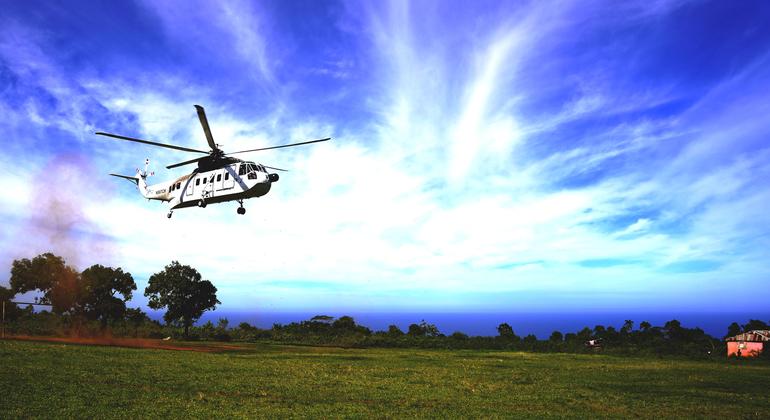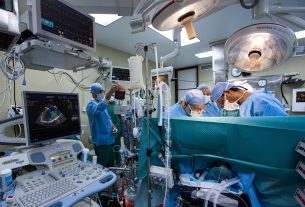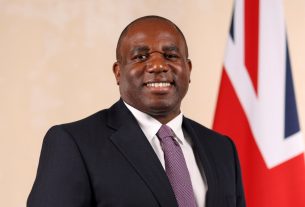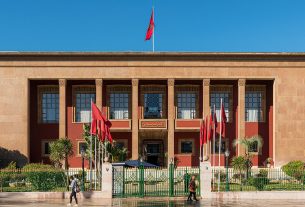Haiti’s capital, Port-au-Prince, is gripped by insecurity due to gang violence and now UNHAS, which is managed by the UN’s World Food Programme (WFP) is the only option for humanitarian workers to travel safely in and out of the city and for critical equipment and relief aid to be transported and distributed within the country.
Robine JNBaptise, who works for UNHAS, and Christine Blais, who is employed by Construction Helicopters, the aviation company operating the aircraft, spoke to UN News about their experiences of working in a high-conflict zone.
Robine JNBaptise: We have two aircraft here in Haiti – a helicopter that holds about 19 people or can carry two tonnes or cargo and a fixed-wing jet 45 that carries nine people. I am an aviation and booking assistant, so am responsible for getting people on and off the aircraft. I also assist with administration and securing operating permits.
Christine Blais: I have served as a flight mechanic and crew chief flying missions around Haiti. On any given day, we would fly between two to six hours. Our aircraft are now based in Cap Haitien, but we have flown out of Turks and Caicos as well as the Dominican Republic.
Robine JNBaptise: It’s a stressful job, but luckily for me, I perform very well under pressure. On some days, we help up to 100 people, mainly [non-governmental organisation] NGO workers, but also UN staff. We are moving people to a safer part of the country, but also bringing essential staff back to Port-au-Prince. We have relocated some 200 people to destinations outside Haiti, so at the end of the day, it’s a rewarding job.
Christine Blais: When we land in Port-au-Prince, we keep the time on the ground to a minimum in order to mitigate the risks. We can land, load and take off within two to five minutes, which is very fast. We have a very good ground crew who keep us safe. In a high-conflict zone, we have to remain flexible at all times whilst responding to the needs of the UN.
A helicopter flies over an urban location in Haiti.
Robine JNBaptise: One of the big challenges we face is overflying Port-au-Prince, where gangs are fighting each other or with the police. There is always the danger that one of our aircraft gets hit by a stray bullet, although I don’t think that our aircraft are being intentionally targeted.
Christine Blais: Colleagues of mine were at the international airport when there was a security breach. It was definitely a dangerous and scary moment for them as shots were being fired as they were working on an aircraft. A commercial plane, which was on the ground at the time, was hit.
Robine JNBaptise: The international airport closed for some weeks, so we established a landing zone elsewhere. One big concern is that gangs could move into this area and take over the landing zone which would stop our operations.
This can be a scary job, but we are now used to the dangers and stress, although we make sure not to take risks. I have to keep in mind that anything can happen to me or the aircraft.
Christine Blais: In high-conflict zones, there are always unknowns, and we have to be aware of the threats at all times. I rely a lot on our team and understand that if something were to happen, you just have to deal with it as it comes.

A passenger arrives on an UNHAS helicopter.
Robine JNBaptise: The service we are providing is really lifesaving, so if our landing zones were shut down, it would be disastrous. At UNHAS, we always need to remind people that we are a humanitarian service and that we take no sides. Our role is to transport humanitarian workers and relief aid in order to help people in crisis.
I have never thought of leaving the country. If I leave, then who is there to stay? As a Haitian and a humanitarian worker, I want to be here and help to get the country back to where it once was.
At some point, the situation is going to improve because when we reach rock bottom, there’s nowhere else to go except up. This is my home, and I want to be part of a brighter future for Haiti.



